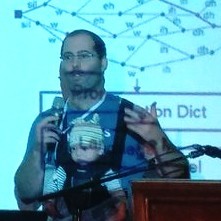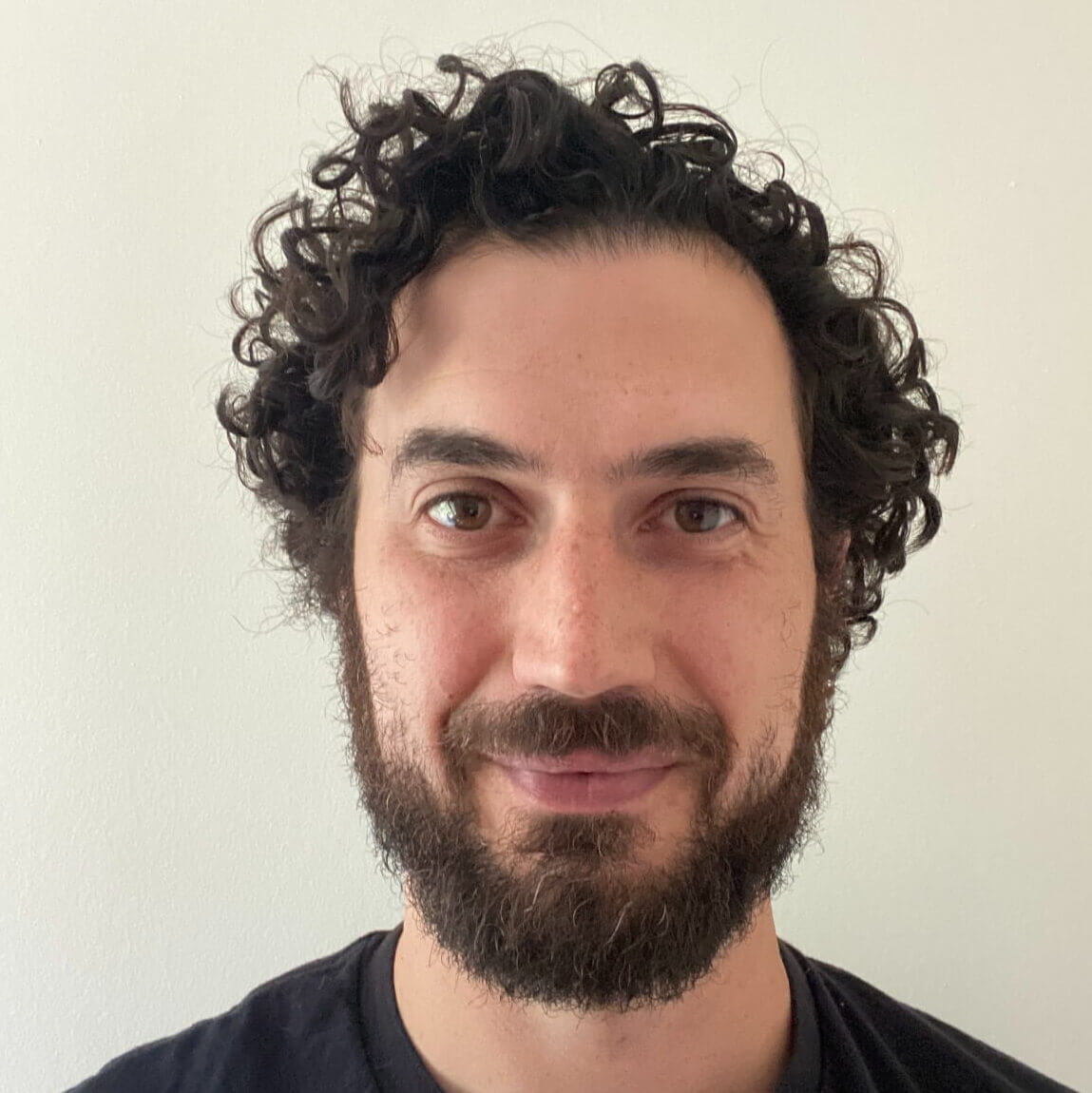Director of Machine Learning Insights [Part 2: SaaS Edition]
If you or your team are interested in building ML solutions faster visit hf.co/support today!
👋 Welcome to Part 2 of our Director of Machine Learning Insights [Series]. Check out Part 1 here.
Directors of Machine Learning have a unique seat at the AI table spanning the perspective of various roles and responsibilities. Their rich knowledge of ML frameworks, engineering, architecture, real-world applications and problem-solving provides deep insights into the current state of ML. For example, one director will note how using new transformers speech technology decreased their team’s error rate by 30% and how simple thinking can help save a lot of computational power.
Ever wonder what directors at Salesforce or ZoomInfo currently think about the state of Machine Learning? What their biggest challenges are? And what they're most excited about? Well, you're about to find out!
In this second SaaS focused installment, you’ll hear from a deep learning for healthcare textbook author who also founded a non-profit for mentoring ML talent, a chess fanatic cybersecurity expert, an entrepreneur whose business was inspired by Barbie’s need to monitor brand reputation after a lead recall, and a seasoned patent and academic paper author who enjoys watching his 4 kids make the same mistakes as his ML models.
🚀 Let’s meet some top Machine Learning Directors in SaaS and hear what they have to say about Machine Learning:

Omar Rahman
Background: Omar leads a team of Machine Learning and Data Engineers in leveraging ML for defensive security purposes as part of the Cybersecurity team. Previously, Omar has led data science and machine learning engineering teams at Adobe and SAP focusing on bringing intelligent capabilities to marketing cloud and procurement applications. Omar holds a Master’s degree in Electrical Engineering from Arizona State University.
Fun Fact: Omar loves to play chess and volunteers his free time to guide and mentor graduate students in AI.
Salesforce: World's #1 customer relationship management software.
1. How has ML made a positive impact on SaaS?
ML has benefited SaaS offerings in many ways.
a. Improving automation within applications: For example, a service ticket router using NLP (Natural Language Processing) to understand the context of the service request and routing it to the appropriate team within the organization.
b. Reduction in code complexity: Rules-based systems tend to get unwieldy as new rules are added, thereby increasing maintenance costs. For example, An ML-based language translation system is more accurate and robust with much fewer lines of code as compared to previous rules-based systems.
c. Better forecasting results in cost savings. Being able to forecast more accurately helps in reducing backorders in the supply chain as well as cost savings due to a reduction in storage costs.
2. What are the biggest ML challenges within SaaS?
a. Productizing ML applications require a lot more than having a model. Being able to leverage the model for serving results, detecting and adapting to changes in statistics of data, etc. creates significant overhead in deploying and maintaining ML systems.
b. In most large organizations, data is often siloed and not well maintained resulting in significant time spent in consolidating data, pre-processing, data cleaning activities, etc., thereby resulting in a significant amount of time and effort needed to create ML-based applications.
3. What’s a common mistake you see people make trying to integrate ML into SaaS?
Not focussing enough on the business context and the problem being solved, rather trying to use the latest and greatest algorithms and newly open-sourced libraries. A lot can be achieved by simple traditional ML techniques.
4. What excites you most about the future of ML?
Generalized artificial intelligence capabilities, if built and managed well, have the capability to transform humanity in more ways than one can imagine. My hope is that we will see great progress in the areas of healthcare and transportation. We already see the benefits of AI in radiology resulting in significant savings in manpower thereby enabling humans to focus on more complex tasks. Self-driving cars and trucks are already transforming the transportation sector.

Cao (Danica) Xiao
Background: Cao (Danica) Xiao is the Senior Director and Head of Data Science and Machine Learning at Amplitude. Her team focuses on developing and deploying self-serving machine learning models and products based on multi-sourced user data to solve critical business challenges regarding digital production analytics and optimization. Besides, she is a passionate machine learning researcher with over 95+ papers published in leading CS venues. She is also a technology leader with extensive experience in machine learning roadmap creation, team building, and mentoring.
Prior to Amplitude, Cao (Danica) was the Global Head of Machine Learning in the Analytics Center of Excellence of IQVIA. Before that, she was a research staff member at IBM Research and research lead at MIT-IBM Watson AI Lab. She got her Ph.D. degree in machine learning from the University of Washington, Seattle. Recently, she also co-authored a textbook on deep learning for healthcare and founded a non-profit organization for mentoring machine learning talents.
Fun Fact: Cao is a cat-lover and is a mom to two cats: one Singapura girl and one British shorthair boy.
Amplitude: A cloud-based product-analytics platform that helps customers build better products.
1. How has ML made a positive impact on SaaS?
ML plays a game-changing role in turning massive noisy machine-generated or user-generated data into answers to all kinds of business questions including personalization, prediction, recommendation, etc. It impacts a wide spectrum of industry verticals via SaaS.
2. What are the biggest ML challenges within SaaS?
Lack of data for ML model training that covers a broader range of industry use cases. While being a general solution for all industry verticals, still need to figure out how to handle the vertical-specific needs arising from business, or domain shift issue that affects ML model quality.
3. What’s a common mistake you see people make trying to integrate ML into a SaaS product?
Not giving users the flexibility to incorporate their business knowledge or other human factors that are critical to business success. For example, for a self-serve product recommendation, it would be great if users could control the diversity of recommended products.
4. What excites you most about the future of ML?
ML has seen tremendous success. It also evolves rapidly to address the current limitations (e.g., lack of data, domain shift, incorporation of domain knowledge).
More ML technologies will be applied to solve business or customer needs. For example, interpretable ML for users to understand and trust the ML model outputs; counterfactual prediction for users to estimate the alternative outcome should they make a different business decision.

Raphael Cohen
Background: Raphael has a Ph.D. in the field of understanding health records and genetics, has authored 20 academic papers and has 8 patents. Raphael is also a leader in Data Science and Research with a background in NLP, Speech, healthcare, sales, customer journeys, and IT.
Fun Fact: Raphael has 4 kids and enjoys seeing them learn and make the same mistakes as some of his ML models.
ZoomInfo: Intelligent sales and marketing technology backed by the world's most comprehensive business database.
1. How has ML made a positive impact on SaaS
Machine Learning has facilitated the transcription of conversational data to help people unlock new insights and understandings. People can now easily view the things they talked about, summarized goals, takeaways, who spoke the most, who asked the best questions, what the next steps are, and more. This is incredibly useful for many interactions like email and video conferencing (which are more common now than ever).
With Chorus.ai we transcribe conversations as they are being recorded in real-time. We use an algorithm called Wave2Vec to do this. 🤗 Hugging Face recently released their own Wave2Vec version created for training that we derived a lot of value from. This new generation of transformers speech technology is incredibly powerful, it has decreased our error rate by 30%.
Once we transcribe a conversation we can look into the content - this is where NLP comes in and we rely heavily on Hugging Face Transformers to allow us to depict around 20 categories of topics inside recordings and emails; for example, are we talking about pricing, signing a contract, next steps, all of these topics are sent through email or discussed and it’s easy to now extract that info without having to go back through all of your conversations.
This helps make people much better at their jobs.
2. What are the biggest ML challenges within SaaS?
The biggest challenge is understanding when to make use of ML.
What problems can we solve with ML and which shouldn’t we? A lot of times we have a breakthrough with an ML model but a computationally lighter heuristic model is better suited to solve the problem we have.
This is where a strong AI strategy comes into play. —Understand how you want your final product to work and at what efficiency.
We also have the question of how to get the ML models you’ve built into production with a low environmental/computational footprint? Everyone is struggling with this; how to keep models in production in an efficient way without burning too many resources.
A great example of this was when we moved to the Wav2Vec framework, which required us to break down our conversational audio into 15sec segments that get fed into this huge model. During this, we discovered that we were feeding the model a lot of segments that were pure silence. This is common when someone doesn’t show up or one person is waiting for another to join a meeting.
Just by adding another very light model to tell us when not to send the silent segments into this big complicated ML model, we are able to save a lot of computational power/energy. This is an example of where engineers can think of other easier ways to speed up and save on model production. There’s an opportunity for more engineers to be savvier and better optimize models without burning too many resources.
3. What’s a common mistake you see people make trying to integrate ML into SaaS?
Is my solution the smartest solution? Is there a better way to break this down and solve it more efficiently?
When we started identifying speakers we went directly with an ML method and this wasn’t as accurate as the video conference provider data.
Since then we learned that the best way to do this is to start with the metadata of who speaks from the conference provider and then overlay that with a smart embedding model. We lost precious time during this learning curve. We shouldn’t have used this large ML solution if we stopped to understand there are other data sources we should invest in that will help us accelerate more efficiently.
Think outside the box and don’t just take something someone built and think I have an idea of how to make this better. Where can we be smarter by understanding the problem better?
4. What excites you most about the future of ML?
I think we are in the middle of another revolution. For us, seeing our error rates drop by 30% by our Wave2Vec model was amazing. We had been working for years only getting 1% drops at each time and then within 3 months' time we saw such a huge improvement and we know that’s only the beginning. In academia, bigger and smarter things are happening. These pre-trained models are allowing us to do things we could never imagine before. This is very exciting!
We are also seeing a lot of tech from NLP entering other domains like speech and vision and being able to power them.
Another thing I’m really excited about is generating models! We recently worked with a company called Bria.ai and they use these amazing GANs to create images. So you take a stock photo and you can turn it into a different photo by saying “remove glasses”, “add glasses” or “add hair” and it does so perfectly. The idea is that we can use this to generate data. We can take images of people from meetings not smiling and we can make them smile in order to build a data set for smile detection. This will be transformative. You can take 1 image and turn it into 100 images. This will also apply to speech generation which could be a powerful application within the service industry.
Any final thoughts?
–It’s challenging to put models into production. Believe data science teams need engineering embedded with them. Engineers should be part of the AI team. This will be an important structural pivot in the future.

Martin Ostrovsky
Background: Martin is passionate about AI, ML, and NLP and is responsible for guiding the strategy and success of all Repustate products by leading the cross-functional team responsible for developing and improving them. He sets the strategy, roadmap, and feature definition for Repustate’s Global Text Analytics API, Sentiment Analysis, Deep Search, and Named Entity Recognition solutions. He has a Bachelor's degree in Computer Science from York University and earned his Master of Business Administration from the Schulich School of Business.
Fun Fact: The first application of ML I used was for Barbie toys. My professor at Schulich Business School mentioned that Barbie needed to monitor their brand reputation due to a recall of the toys over concerns of excessive lead in them. Hiring people to manually go through each social post and online article seemed just so inefficient and ineffective to me. So I proposed to create a machine learning algorithm that would monitor what people thought of them from across all social media and online channels. The algorithm worked seamlessly. And that’s how I decided to name my company, Repustate - the “state” of your “repu”tation. 🤖
Repustate: A leading provider of text analytics services for enterprise companies.
1. Favorite ML business application?
My favorite ML application is cybersecurity.
Cybersecurity remains the most critical part for any company (government or non-government) with regard to data. Machine Learning helps identify cyber threats, fight cyber-crime, including cyberbullying, and allows for a faster response to security breaches. ML algorithms quickly analyze the most likely vulnerabilities and potential malware and spyware applications based on user data. They can spot distortion in endpoint entry patterns and identify it as a potential data breach.
2. What is your biggest ML challenge?
The biggest ML challenge is audio to text transcription in the Arabic Language. There are quite a few systems that can decipher Arabic but they lack accuracy. Arabic is the official language of 26 countries and has 247 million native speakers and 29 million non-native speakers. It is a complex language with a rich vocabulary and many dialects.
The sentiment mining tool needs to read data directly in Arabic if you want accurate insights from Arabic text because otherwise nuances are lost in translations. Translating text to English or any other language can completely change the meaning of words in Arabic, including even the root word. That’s why the algorithm needs to be trained on Arabic datasets and use a dedicated Arabic part-of-speech tagger. Because of these challenges, most companies fail to provide accurate Arabic audio to text translation to date.
3. What’s a common mistake you see people make trying to integrate ML?
The most common mistake that companies make while trying to integrate ML is insufficient data in their training datasets. Most ML models cannot distinguish between good data and insufficient data. Therefore, training datasets are considered relevant and used as a precedent to determine the results in most cases. This challenge isn’t limited to small- or medium-sized businesses; large enterprises have the same challenge.
No matter what the ML processes are, companies need to ensure that the training datasets are reliable and exhaustive for their desired outcome by incorporating a human element into the early stages of machine learning.
However, companies can create the required foundation for successful machine learning projects with a thorough review of accurate, comprehensive, and constant training data.
4. Where do you see ML having the biggest impact in the next 5-10 years?
In the next 5-10 years, ML will have the biggest impact on transforming the healthcare sector.
Networked hospitals and connected care:
With predictive care, command centers are all set to analyze clinical and location data to monitor supply and demand across healthcare networks in real-time. With ML, healthcare professionals will be able to spot high-risk patients more quickly and efficiently, thus removing bottlenecks in the system. You can check the spread of contractible diseases faster, take better measures to manage epidemics, identify at-risk patients more accurately, especially for genetic diseases, and more.
Better staff and patient experiences:
Predictive healthcare networks are expected to reduce wait times, improve staff workflows, and take on the ever-growing administrative burden. By learning from every patient, diagnosis, and procedure, ML is expected to create experiences that adapt to hospital staff as well as the patient. This improves health outcomes and reduces clinician shortages and burnout while enabling the system to be financially sustainable.
🤗 Thank you for joining us in this second installment of ML Director Insights. Stay tuned for more insights from ML Directors in Finance, Healthcare and e-Commerce.
Big thanks to Omar Rahman, Cao (Danica) Xiao, Raphael Cohen, and Martin Ostrovsky for their brilliant insights and participation in this piece. We look forward to watching each of your continued successes and will be cheering you on each step of the way. 🎉
If you or your team are interested in accelerating your ML roadmap with Hugging Face Experts please visit hf.co/support to learn more.

